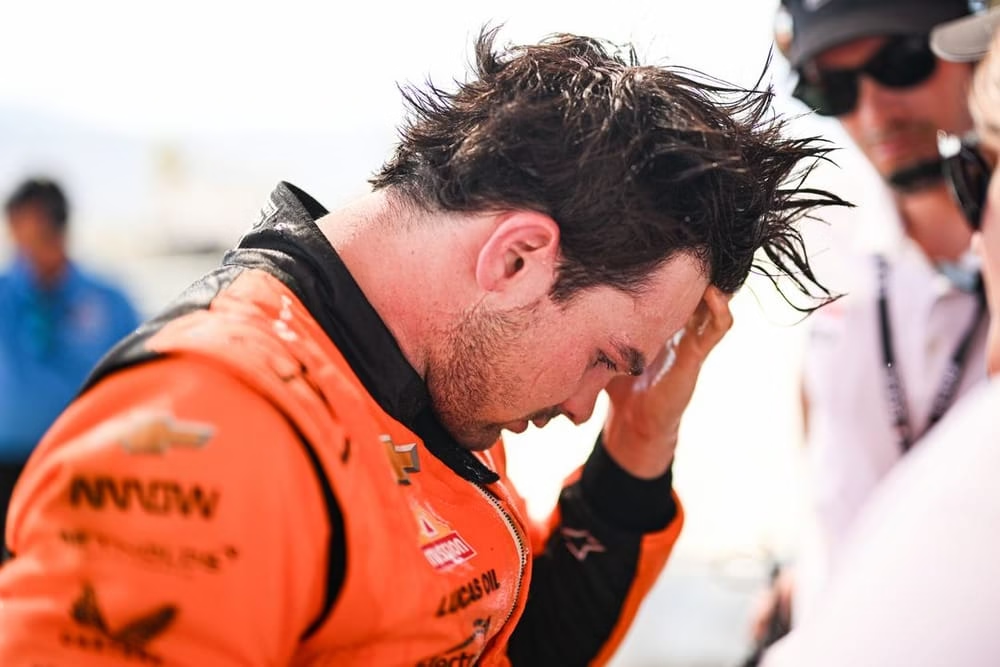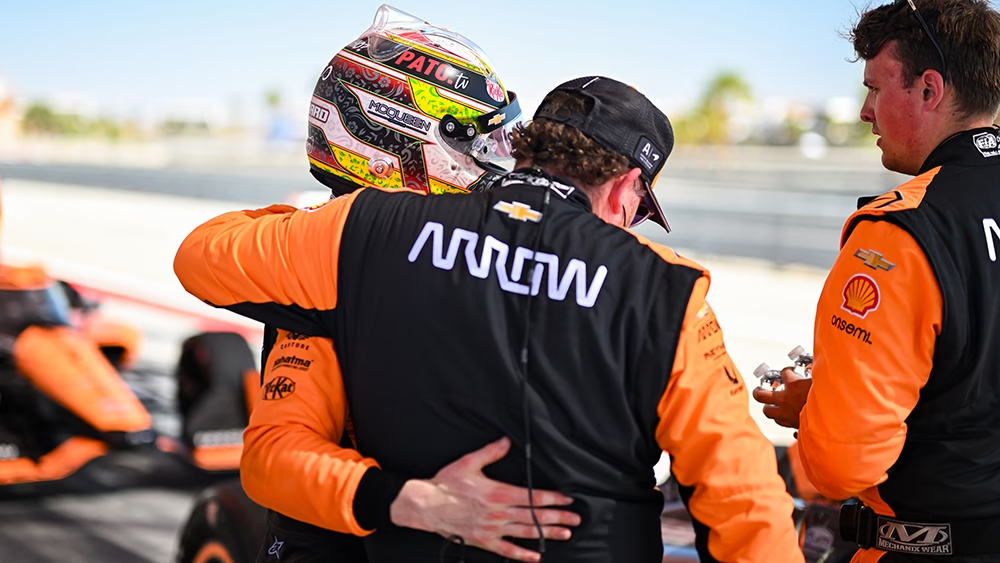For most of the race, Pato O’Ward was in complete control, dominating the field. He managed to build a lead of over 11 seconds after the final round of pit stops. Meanwhile, his teammate Christian Lundgaard battled with Alex Palou for second place. With both drivers performing at such a high level, everything seemed to be going perfectly for Arrow McLaren.
But after that final pit stop, things quickly went downhill for the papaya team. Palou went on to claim his second consecutive victory of the season with a commanding nine-second advantage, delivering an impressive comeback that underscored his dominance in IndyCar.
So, what went wrong? How did Palou manage to erase that 11-second gap in just a few laps late in the race? And how did Arrow McLaren miss out on a one-two finish after securing the front row at the start?

Tire Strategy Sinks O’Ward
Arrow McLaren made a crucial mistake with their tire strategy. O’Ward started the race on a fresh set of alternate tires, while Palou wisely saved his for the final stint — a decision that proved to be decisive.
All the top drivers in this race followed a three-stop strategy. After the final round of pit stops for fuel and tires, O’Ward still maintained an 11-second lead.
“Sticker set of red tires, that was the answer for losing the lead,” O’Ward lamented. In the final stint, the Mexican driver opted for primary tires, while the Spaniard chose new, faster alternate tires. Combining dominance with speed, Palou quickly wiped out a 10-second deficit and transformed it into a 10-second victory. This left O’Ward in second place and Lundgaard in third.
Power Problems: O’Ward’s Hybrid Frustration
The Thermal Club circuit is packed with stop-and-go corners and long straights, which demands a reliable hybrid system for optimal performance. However, O’Ward faced a major challenge with IndyCar’s hybrid system, which played a considerable role in his struggle to maintain the lead.
O’Ward said: “Yeah, for 50% of the race I couldn’t use the thing. Just overheats“.
Still, these issues weren’t as crucial as the tire strategy. “In race trim, like, if you’re asking me if I would have won that race if I didn’t have those issues, the answer is still no”, O’Ward commented.

Backmarkers and Team Tactics
Finally, the last straw: dealing with backmarkers. After his last pit stop, he found himself stuck in traffic, but to make matters worse, his fellow Chevrolet-affiliated drivers offered no support. Frustrated, O’Ward didn’t hold back: “I mean, I hate to whine about it, but it sucks to be the leader. All of our Chevy affiliate teams are worthless with helping when a Chevy leader is coming up on them.”
A whole different story goes with the Honda-affilliated teams. Louis Foster delayed O’Ward, wasting valuable time before the Mexican got through. However, an advantage over Palou of over 7s had come down to less than 2.
“Honda seem to work as a team very, very well because Foster was doing everything in his power to keep me behind. Palou gets right behind him, and he just lets him cruise by”, Pato O’Ward added.
In the end, it was a perfect storm of missteps that cost O’Ward the victory at Thermal Club. A tire strategy mistake, hybrid system issues, and the difficulty of dealing with backmarkers all combined to cost him his first win of the season.
While Palou’s impressive comeback highlighted his skill and strategy, O’Ward and Arrow McLaren will surely be analyzing every detail to learn from this almost-win. As the season progresses, the lessons learned from this race will be crucial in their pursuit for redemption and future success.




















Pato debió ganar 🔝🏎
venga pato ganas la siguiente